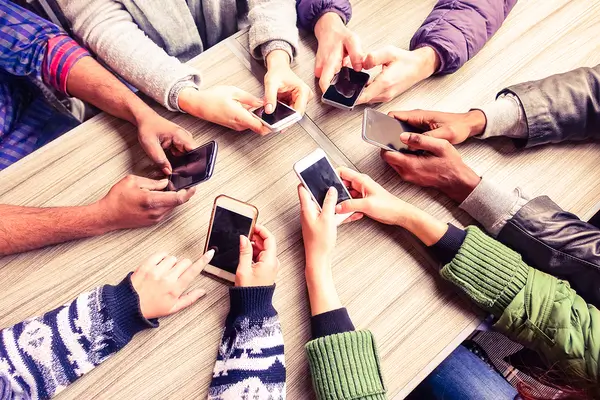In Harford County, Maryland, the journey of recovery from substance-use addiction is personal — but it’s also deeply shaped by the environment around us. From the support systems we have in place to the tools we use every day; recovery is never a solo act. And in today’s world, social media has become one of the most powerful tools influencing that journey — for better and for worse.
Whether you live in Bel Air, Edgewood, Aberdeen, or in a rural pocket of the county, social media likely plays some role in your daily life. For individuals navigating sobriety in Harford County, it can be a source of hope — or a potential setback.
Let’s explore how social media affects addiction recovery locally, and how those in Harford County can engage with it in ways that strengthen — rather than sabotage — their healing.
The Good: Support, Resources, and Connection
1. Local and Online Recovery Communities
Harford County is home to a strong recovery community, with organizations like Ashley Treatment, The Mann House, Char Hope and The Homecoming Project playing key roles. Many of these groups have active social media presences, offering virtual support groups, educational content, and real-time encouragement.
Platforms like Facebook and Instagram allow individuals in recovery to connect with local peers, even if they can’t make it to in-person meetings in Bel Air or Edgewood. Hashtags like #HarfordStrong, #RecoveryMaryland, and #SoberInHarford are increasingly used by people sharing their stories and milestones from right here in our county.
2. Education at Your Fingertips
Harford’s Health Department, nonprofits, and sober advocates use social media to distribute vital information — from Narcan training events and recovery meetings, to how to access outpatient services or harm reduction programs. These platforms help break stigma and make support more accessible to the broader community.
3. Visibility and Inspiration
When someone from Harford County shares their recovery journey — even anonymously — it can inspire others who may feel alone. Local voices sharing authentic stories about sobriety, relapse, or mental health challenges help normalize the recovery process and show that hope is real and recovery is possible.
The Risks: Triggers, Comparison, and Isolation
1. Exposure to Triggering Content
Unfortunately, not all content on social media is supportive. Even in a recovery-friendly space like Harford County, social media feeds can be unpredictable. Content glamorizing drug use, alcohol-centered lifestyles, or “party culture” can appear without warning — especially on platforms like TikTok or Instagram Reels.
For someone in early recovery, this can lead to powerful cravings, emotional setbacks, or even relapse.
2. Toxic Positivity and Comparison
Social media is a highlight reel. Seeing others in recovery post “perfect” progress or celebrating milestones can create pressure to perform — and guilt if your path looks different. Recovery is rarely linear, and in Harford County, like everywhere else, setbacks are a part of the process. But online, those moments often go unshared.
This can lead to harmful comparisons and a false belief that you’re “not doing enough.”
3. False Information and Unsafe Advice
While many experts and organizations in Maryland use social media responsibly, others do not. Some accounts promote unproven detox methods, downplay the seriousness of addiction, or push “miracle cures.” Without professional oversight, this content can spread quickly and endanger lives.
Using Social Media Mindfully in Recovery
If you or someone you love is in recovery in Harford County, here are ways to make social media part of your support system — not a source of stress:
- Follow Local Recovery Resources
Pages like Harford County Health Department, Rage Against Addiction, and ACR post reliable updates on events, services, and support groups happening in our area. - Curate Your Feed
Unfollow accounts that glorify substance use or create emotional discomfort. Follow sober creators, peer recovery advocates, and mental health professionals who promote healing and honesty. - Set Boundaries
Use app limits or take breaks from scrolling, especially during times of emotional vulnerability. Make space for real-life connections, whether that’s through AA/NA meetings, counseling, or local support groups. - Engage with Purpose
Don’t just scroll — interact. Comment, share your progress, or message others in the recovery community. Even one supportive interaction can shift your whole day.
Final Thoughts: Building a Stronger Recovery Culture in Harford County
Social media is here to stay. The question isn’t whether we should use it in recovery — it’s how we use it. For people in Harford County battling substance-use addiction, the digital space can be a lifeline or a landmine.
When used mindfully, social media can connect you with others in your town who understand the journey. It can help you find meetings in Bel Air, learn about sober housing in Aberdeen, or join virtual check-ins from the edge of rural Harford. It can even become part of your accountability toolkit — a digital extension of your support network.
But it also requires boundaries, awareness, and intention. Recovery in Harford County is a community effort — and social media, when used wisely, can be one of our greatest tools in building a culture of healing, connection, and hope.

